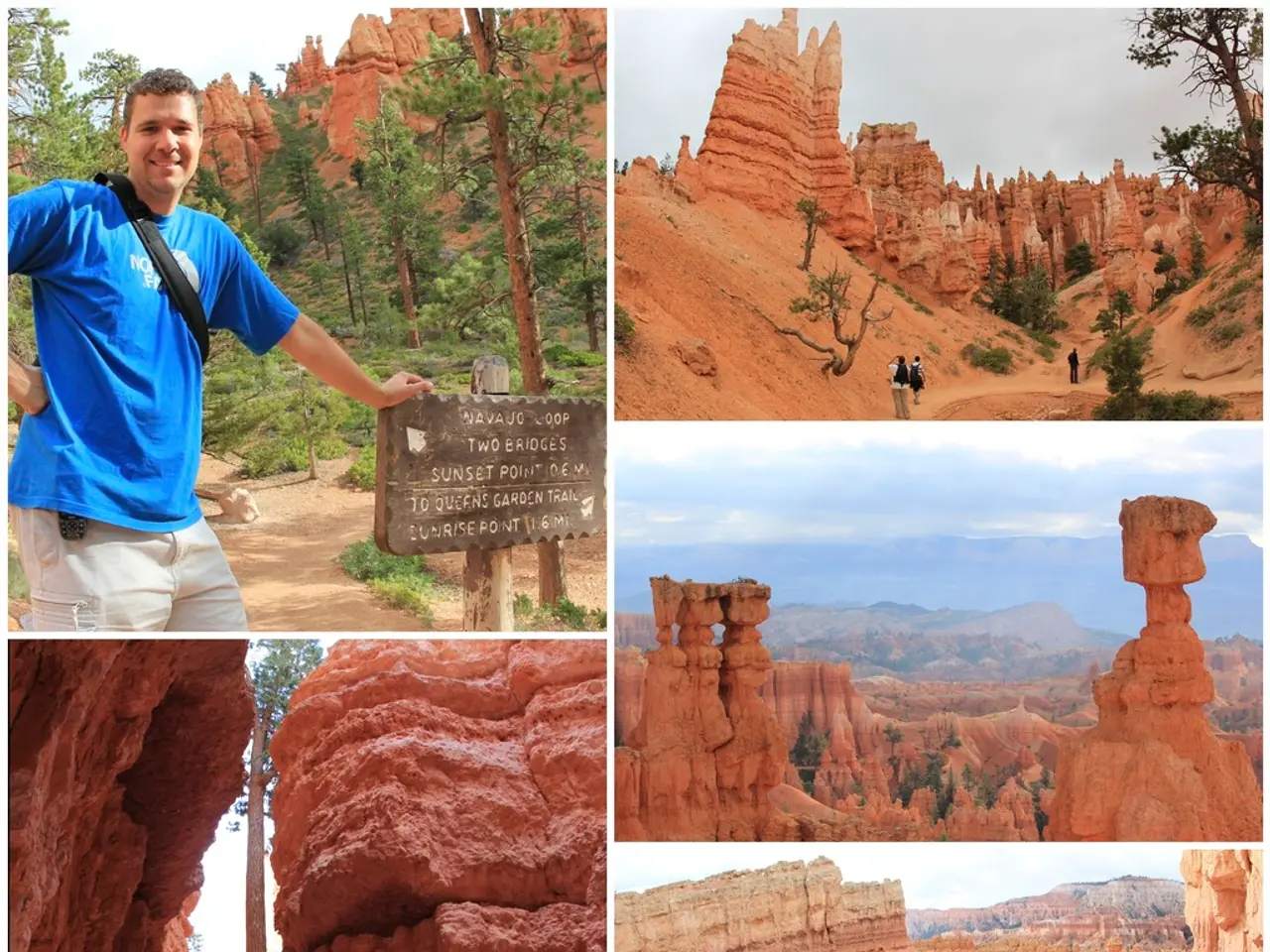Discovered in New Mexico: 20,000-year-old signs of ancient transportation systems
In a groundbreaking discovery, researchers have uncovered evidence of how ancient Indigenous people moved around, providing a new perspective on their story. The study, published in the January edition of Quaternary Science Advances, was led by Matthew Bennett, a professor of environmental and geographical sciences at Bournemouth University in the U.K.
The research focuses on the recently discovered drag marks at White Sands National Park in New Mexico, which offer the first indication of how prehistoric people moved heavy loads before the invention of wheels. These marks were left by a travois, a wooden frame made from two poles bound together.
According to the study, adults likely pulled the travois while children followed, based on the size and positioning of the ancient footprints found next to the drag marks. The marks extend up to 165 feet (50 meters) in length, providing a fascinating insight into the transportation methods used by our ancestors.
The study also suggests that our ancestors must have used something to carry their possessions as they migrated around the world, but these wooden vehicles have since rotted away. The discovery at White Sands challenges the previous assumption that humans arrived in North America 13,000 to 16,000 years ago, as the human footprints found at the site were dated to around 21,000 to 23,000 years ago.
Sally Reynolds, a mammalian paleontologist at Bournemouth University, is a co-author of the study. The researchers tested their theory by making their own travois and dragging them along mudflats in the U.K. and along the coast of Maine to confirm their findings.
It's important to note that most known early transportation in North America involved other means such as sleds, canoes, or carrying goods on foot or using animals rather than wheeled carts or wooden vehicles. The origin and spread of wheeled vehicles is commonly traced back to the Old World (Eurasia), with ancient chariots made of wood dating back thousands of years. However, the earliest known evidence of human use of wooden vehicles for transport in North America remains sparse and not well documented in the archaeological record.
The discovery at White Sands adds to our understanding of the lives of the first people to settle in the Americas. It provides a glimpse into their transportation methods, offering a more comprehensive view of their daily lives and movements. The study emphasizes the importance of ongoing archaeological research in uncovering the rich history and culture of ancient Indigenous peoples.
- Examining the study's findings, it appears that our ancestors embraced a holistic approach to health-and-wellness, incorporating fitness-and-exercise activities, such as pulling travois, into their daily lives, which could have contributed to their overall well-being and longevity during the aging process.
- As science continues to unearth ancient relics and artifacts, it's fascinating to consider the potential advancements in technology and transportation that might have been lost to time but are now being rediscovered, offering new perspectives on our shared history and the ingenuity of our ancestors.




